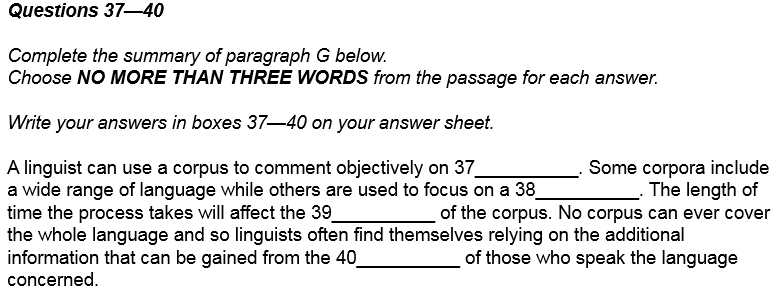什么是GRE阅读意群训练方法?今天小编给大家带来了GRE阅读意群训练方法介绍,希望能够帮助到大家,下面小编就和大家分享,来欣赏一下吧。
GRE阅读意群训练方法介绍
什么是意群训练
在进入正题之前,先来看看意群的概念,对意群的解释目前流行几个版本,从阅读的意义上来讲,意群就是指我们平时阅读一篇文章时,视线每停留一次,进入我们视界范围的单词会有多个,而这些单词不带有任意性,单词与单词之间的逻辑意义紧密相连,我们可以暂且将这种意义紧密相连的多个单词视为一个意群。
我们要想将这种方法运用到实际的阅读当中,那我们就有必要知道,语篇的构成单位为段落,段落的构成单位则是句子,而句子的最终构成单位为语言意义的基本载体单元词汇。而我所讲的意群训练,是指按照对词汇之间意义的紧密性及对英语句子的结构进行拆分的阅读方法,这样不仅利于阅读速度的提升还可以提高一个人对语篇环境的适应能力。
例句1:
The primary method previously used by paleontol.ists to estimate climatic changes that occurred during Pleistocene glacial cycles [新世纪冰川周期] was the determination of 18O/16O [18O与16O分别为氧元素] ratios in calcareous fossils.
这个句子读完第一遍之后,如果你发现自己没有读懂这个句子是因为当中所出现的生词所造成的,那你错了,如若使用意群法对此句进行结构拆分,我们反而会发现其实这个句子读起来并是那么晦涩难懂。换句话说,如果将单词扩大到一个短语成分,分句,乃至整个句子,这样对文章理解起来更深刻也更全面
上面的那个句子,我将其解构为:一个主干结构,4个意群:
本句主干:Method[主语]+ Be[系动词]+Determination [表语],
四个意群分别为:1) The primary method previously used by paleontol.ist; 2) to estimate climatic changes that occurred; 3) during Pleistocene glacial cycles; 4) was the determination of 18O/16O ratios in calcareous fossils. 在这句话中,意群的划分依据为词语与词语之间的联系紧密度,意群1)应解释为: method前有The primary, 后有previously used by paleontol.ist,分别起到修饰method的作用,而意群2)则在此处用作动词use的目的状语,用来说明这种方法的用途所在, 意群4)为系动词+表语结构,整个句子的结构也随之开始变的清晰起来。
例句2:
In the Weary Blues, Hughes chose to modify the traditions that decreed that African American literature must promote racial acceptance and integration, and that, in order to do so, it must reflect an understanding and mastery of Western European literary techniques and styles.
中文释义:
在<<忧郁的蓝调>>一诗中,休斯选择改变这样一些传统:即,那些曾经规定美国黑人文学必须以倡导种族容忍及种族团结为宗旨的文学传统,并规定为实现这一目标,美国黑人文学还须反映出对西欧文学技巧及风格的理解和娴熟运用能力的文学传统.
这段话中出现了,三个That,往往考生会在这几个that之间踌躇不定,尤其是第三个that后面的意群,in order to do so作为一个插入成分将that与紧跟that后的宾语从句分隔开来,第一个that起引导定语从句的作用,且第一个that可用which 来替代,而第二与第三个that起引导宾语从句的作用,第三个that前省略了动词decreed。当句子当初出现复合句时,尤其是宾语从句或定语从句,会以that为标志出现,而只要我们将that及其所引导的成分视为一个意群进行分析,我们读时才不会出现那种不得要领的阅读感觉
例句3
The petition asked that during June, July, and August the working hours be changed from 8 to 5 with an hour off for lunch to 7 to 3:30 with a half-hour for lunch
中文释义:此申请书请求6,7,8三个月份间的工作时间应从原来早8晚5改为现在的早7点上班晚3:30下班的工作时间制,而午餐时间则由原来的1小时改为现在的半小时。
如果我们能够分清此句的意群,我们就不至于读不懂整句话,本句结构为:The petition [主语]+asked[谓语]+that[后接宾语从句]。当我们看到be change时,便会一眼看到change 后的from……to……to……to,这时,问题便出现了,这里存在两个意群:1) 8 to 5 with an hour off for lunch; 2) 7 to 3:30 with a half-hour for lunch, 当我们理清这两个意群以后,整个句子开始变得流畅了许多。
GRE阅读材料练习:鸟类拥有磁性感知能力
Birds can navigate by the Earth's magnetic field.How they do it is still a mystery.Where would people be without magnetic compasses?The short answer is: lost.By giving human beings a sixth sense—an ability to detect the hitherto invisible magneticfield of the Earth—the compass proved one of the most important inventions ever.
鸟类能够利用地球磁场导航。机理尚不明确人类没有指南针会怎样?很简单:迷失方向。指南针给了人类第6感,使人能辨别地球无形的磁场,成为最重要的发明之一。
It let sailors navigate without sight of the night sky.And that led to the voyages of discovery, trade and conquest which created the politicalgeography of the modern world.Imagine, then, what animals which had their own, built-in compasses could achieve.They might spend their summers doingthe English Season in Glyndebourne or Henley, and then overwinter in the warmth of Mombasa. They might strike out, like intrepid pioneers, from Angola to Anchorage.They might even, if truly gripped by wanderlust and a hatred of the darkness, live in near-perpetual daylight by migrating from Pole to Pole.And that is just what some birds do.
海员不用观察夜空便可以辨识方向。人们用它进行海上探索,海上交易,攻城掠地,进而开创了现代世界的政治版图。有些动物有自己内嵌的指南系统。可以想象得出这些动物的能力。它们可以在戈林德伯恩或亨利镇消暑,享受自己的英格兰夏日。然后在温暖的蒙巴萨岛过冬。它们可以像无畏的开拓者一样,从安哥拉独闯安克雷奇。假如它们为旅行所牵绊,为黑暗而烦恼,它们会穿梭于两极之间,过着永远有光亮的生活。以上这些只是鸟类能力的一部分。
Swallows travel between Europe and Africa. Northern wheatears fly from Africa to Alaska, andback.Arctic terns each year make the journey from one end of the planet to the other.And they can do it, at least in part, because they do have a magnetic sense denied tohumans.
家燕在欧洲和非洲之间迁徙。石栖鸟在非洲和阿拉斯加之间迁徙。每年,北极燕鸥都会从地球的一端飞到另一端。它们能这么做的原因之一便是鸟类可以感知磁性,而人类不行。
The most familiar avian navigation trick is that pulled off by homing pigeons.As a consequence pigeons have often found themselves at the sharp end of investigationsabout how bird navigation in general, and magnetic sense in particular, actually work.That pigeons have such a sense was shown more than 40 years ago, by William Keeton ofCornell University, in upstate New York, who attached magnets to pigeons to see if they couldstill home.They could not, though birds fitted with non-magnetic dummies managed perfectly well.
人类最为熟知的鸟类导航技巧就是通过研究信鸽而得到的。鸽子便处在了人类研究的尖端。人们用它研究鸟类整体的导航机能,用它特别研究磁性感应机制。鸽子显示出此种能力是在40年前。当时,纽约州北部康乃尔大学的William Keeton把磁体系在鸽子身上,观察它们是否能够回家。结果是它们不能,但是那些带有仿磁体的鸽子却回家。
Since then, experiments on other species have shown magnetic sensitivity is common amongbirds. What these experiments have not shown, however, is how the birds manage it.See it? Hear it? Smell it?There are two theories.One is that the magnetic sensors are grains of magnetite, a form of iron oxide which, as itsname suggests, is easily magnetised.The other is that the Earth's magnetic field affects a particular chemical reaction in the retinain a way that reaches into the arcane depths of quantum mechanics.
此后的实验表明,磁性感知能力是鸟类共有的,但并没有解释是如何操作的。视觉?听觉?嗅觉?理论上的说法有两种。一种是鸽子具有磁感应器,这是一种以氧化铁形式存在的磁铁矿粒子。顾名思义,这种物质极易磁化。另一种说法认为,地球磁场能对视网膜里特定的化学反映产生影响,在某种程序上可以达到神秘量子力学的深度。
The magnetite hypothesis concentrates on birds' beaks.Magnetite grains are common in living things, and are known to be involved in magneticsensing in bacteria. In birds they are particularly abundant in the beak.So last year David Keays of the Institute of Molecular Pathology, in Vienna, dissected the beaksof nearly 200 unfortunate pigeons, to find out more.What he discovered was not encouraging.There were, indeed, lots of magnetite grains.But he had expected they would congregate in some sort of specialised sensory cell akin to thetaste buds of the tongue or the hair cells of the ear.Instead, he found that the beak's magnetite is mostly in macrophages.
These are cells whose job is to wander around amoeba-like, chewing up bacteria and debrisfrom other body cells as they go.
磁铁矿假说的焦点是鸟类的喙。磁铁矿粒子是生物共有的,广泛存在于鸟的喙中。去年,维也纳分子病理学研究所的David Keays对将近200只鸽子进行了解剖,以期得到更多发现。但是,他发现的并不令人鼓舞。大量铁磁矿粒子确实存在。他原以为铁磁矿粒子会聚集成为专门的感觉细胞,类似于舌头上的味蕾和内耳毛细胞。但是,他发现,喙部的铁磁矿主要以巨噬细胞的形式存在,这些细胞的职能是以游离细胞的形式对细胞残片及病原体进行噬菌。
Not, then, likely candidates as magnetic sensors.Other experiments, though, do suggest the beak is involved.The nerve that connects it to the brain is known as the trigeminal.When Dominik Heyers and Henrik Mouritsen of Oldenburg University, in Germany, cut thetrigeminals of reed warblers the birds' ability to detect which way was north remained intact.They did, however, lose their sense of magnetic dip.Dip indicates latitude, another important part of navigation.To confuse matters further, some people accept Dr Keays's interpretation of what is going onin the beak,but think that the relevant magnetite grains are elsewhere—in the hair cells of the ear, whichare also rich in iron oxide.If they are right, then from the birds' point of view they are probably hearing the magneticsignal.The main alternative to the nasal-magnetite hypothesis, though, is not that birds hearmagnetic fields, but that they see them.
因此,巨噬细胞不可能具有磁感应功能。其它的实验也包含了对喙的研究。联结喙与脑的神经叫三叉神经。德国奥尔登堡大学的Dominik Heyers和Henrik Mouritsena切断了苇莺的三叉神经,保留了它们辨别北方的能力。然而,这些鸟却失掉了磁倾角的感应力。磁倾角可以指示纬度,是导航的重要组成部分。Keays对鸟喙解释使情况更加复杂。但有些人还是接受了他的说法。但是这些人认为鸟身体的其它部位也存在磁铁矿粒子—内耳毛细胞。氧化铁也富含这种粒子。假如这些人的假定正确,从鸟的角度来看,它们可能听得到磁信号。鼻腔内存在磁铁矿的假说 并不是鸟类可以听到磁场,而是能看到磁场。
One line of evidence for this is that part of a bird's brain, called cluster N, which gets its inputdirectly from the eyes, seems to be involved in magnetic sensing.Experiments Dr Mouritsen's team conducted on robins showed that destroying cluster Ndestroys a bird's north-detecting sense, and other experiments, on meadow pipits, show thatcells in cluster N are far more active when the birds are using their magnetic sense than whenthey are not.
关于此的证明是,鸟大脑中有一部分叫cluster N,可以直接得到眼部输送的信息,好像跟磁场感应有联系。博士Mouritsen研究团队对知更鸟进行了实验,得出推断。实验显示破坏知更鸟的cluster N,也就破坏了它们识别北方的能力。研究团队又对草地鹨进行了实验。实验显示,鸟类使用磁感应能力的时候,cluster N细胞异常活跃。
The problem with this idea is that birds' eyes do not have magnetite in them.If they do house magnetism detectors, those detectors must be something else.That something, according to a hypothesis advanced by Klaus Schulten, who works at theUniversity of Illinois at Urbana-Champaign, is a type of retinal protein called a cryptochrome.When hit by light, a cryptochrome produces pairs of molecules called free radicals that areelectrically neutral but have unpaired electrons in them.Electrons are tiny magnets, so they tend to attract each other and pair up in a way thatneutralises their joint magnetic fields.
此种假说的问题在于鸟类的眼部没有磁铁矿。假如它们真的起到了磁探测器的作用,那么肯定另有他物。在伊利诺斯大学香槟分校工作。据Schulten,这种他物是一种名为cryptochrome的尿视黄醇蛋白。当受到光照时,就产生名为自由基的分子对。这种自由基呈电中性,其中含有未配对电子。电子就是微小的磁性体。因此,当它们的联合磁场中合之时,电子就会相互吸引,就会形成组对。
Unpaired electrons, however, remain magnetic, and thus sensitive to the Earth's field.Moreover, because the unpaired electrons in the free radicals were originally paired in themolecule that split to form the radicals, quantum mechanics dictates that these electronsremain entangled.This means that however far apart they move, what happens to one affects the other'sbehaviour.
但是,那些不成对电子仍具磁性,对地球磁场很敏感。因为自由基中的那些不成对电子最初存在于分 裂成为自由基分子之中,量子力学规定这些电子依然是绞缠的。也就是说,无论双方离得有多远,一方的行为会影响另一方。
Calculations suggest the different ways the two radicals feel the Earth's field as they separateis enough to change the way they will react with other chemicals—including ones that triggernerve impulses, and that, via entanglement, they can transmit this information to each other,and thus affect each other's reactions.
此种假设表明,当两种自由基分离时,它们感知地球磁场的相反作用足够能够改变它们与其它化学物质相互反应的方式――包括那些能产生神经脉冲的化学物质。同时,通过绞缠,它们彼此能互相信息,从而产生相互影响。
This, the calculations indicate, would be enough for a bird's brain to interpret the magneticfield.It would probably see a pattern of spots before its eyes, which would remainstationary as itscanned its head from side to side.And some birds do, indeed, scan their heads this waywhen assessing the direction ofmagnetic north.It is possible, of course, that both hypotheses are right,and that birds have two magneticsenses, with one perhaps concentrated on north detection and theother on detecting dip.But there is something particularly poetic about the idea that even part of thismysterioussixth sense depends on a still-more-mysterious quantum effect—one that Einsteinhimselfdescribed as spooky action at a distance.
此种假设表明,这足可以让鸟脑识别磁场。鸟眼可能会看到眼前有某种样式的斑点图案,当鸟类对其识别之时,眼睛是固定的。其实,当鸟类辨别地磁北极之时,确实能够用此法扫描头部。当然,两种假说都有正确的可能。鸟类也有可能有两套磁感应能力,一种集中在北方,另一种集中于磁倾角。这种神秘的第六感觉依赖于更加神秘的量子力学效应。对此还有一种诗意般的解释,即爱因斯坦自己说的鬼魅般的超距作用。
2020GRE阅读意群训练方法介绍相关文章:
★ GRE阅读高频题型训练注意事项
2020GRE阅读意群训练方法介绍
上一篇:GRE阅读考试如何加快速度呢
下一篇:GRE阅读要关注的重点






